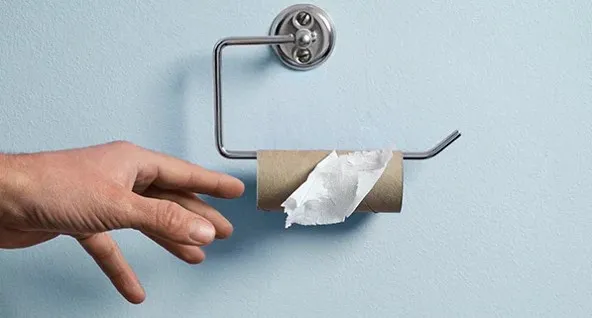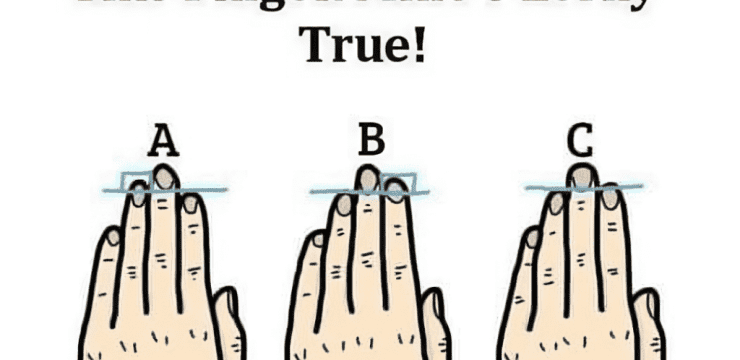The steady shrinkage of toilet rolls in the United States has been a source of confusion and frustration for many consumers. As we’ve grown accustomed to the familiar size and shape of our trusty toilet paper, the gradual downsizing of these household essentials has left us scratching our heads and reaching for our wallets more often.
But this is no mere coincidence – the shrinking of toilet rolls is a calculated move influenced by a complex web of economic, manufacturing, and environmental factors. In this in-depth exploration, we’ll delve into the reasons behind this trend and uncover what it means for you as a consumer.

Customers wondered why have US toilet rolls shrunk in size over the years. Image Credit: Getty
One of the primary drivers of the toilet roll size reduction is the simple concept of cost-cutting. Manufacturers have faced mounting pressures from rising production costs, from raw materials to transportation. To maintain their profit margins without significantly raising prices, these companies have turned to a practice known as “shrinkflation.”
Shrinkflation is the subtle reduction in the size or quantity of a product while keeping the price the same. This strategy allows companies to pass on increased costs to consumers without overtly raising prices, which can be a sensitive topic for many shoppers.
In the case of toilet paper, this has translated to a noticeable decrease in the diameter of each roll, as well as a reduction in the number of sheets per roll. Where a standard roll once had a 4.5-inch diameter, many now measure closer to 4 inches. And where a roll might have boasted 200 sheets, many have been downsized to just 150.
Interestingly, the shrinking of toilet rolls isn’t solely driven by economic factors. Modern consumer habits have also played a role in shaping the industry’s response.
Many people today use toilet paper more efficiently, often folding rather than wadding the material. This shift in usage patterns means that consumers are using fewer sheets per visit, leading manufacturers to adjust the size of their rolls accordingly.

Economic reasons primarily drive the reduction in size. Image Credit: Getty
By aligning the product size with these more efficient usage habits, companies can ensure that their toilet paper remains in sync with consumer behavior. This allows them to potentially reduce costs while still meeting the needs of the modern toilet paper user.
In addition to economic and usage considerations, environmental concerns have also factored into the shrinking of toilet rolls. As companies become more environmentally conscious, they are seeking ways to reduce waste and resource consumption.

Shrinkflation is another reason for smaller toilet rolls. Image Credit: Getty
Smaller rolls can lead to less packaging waste and a decrease in the total amount of paper used, which aligns with broader sustainability goals. Manufacturers are increasingly focused on creating products that balance performance with environmental impact, and the reduction in roll size is one way they are addressing these challenges.
Not all consumers are pleased with the shrinking rolls, however. Many feel that they are getting less value for their money, as they need to purchase toilet paper more frequently. This perceived loss of value has led to frustration among some shoppers, who feel that they are being shortchanged.
In response, manufacturers emphasize that the quality and functionality of their products remain unchanged despite the reduction in size. They argue that the improvements in softness, strength, and absorbency offset the smaller roll size, ensuring that consumers still receive a satisfactory experience.
As economic pressures, environmental concerns, and consumer habits continue to evolve, it’s likely that we’ll see further changes in the toilet paper industry. Manufacturers may continue to innovate, finding new ways to balance cost, performance, and sustainability.

Environmental concerns also led to the size reduction. Image Credit: Getty
For consumers, staying informed about these changes can help make more conscious purchasing decisions. By understanding the factors driving the shrinking of toilet rolls, we can better navigate the market and ensure that we’re getting the best value for our money.
The shrinking size of toilet rolls in the United States is a complex issue, shaped by a combination of economic, environmental, and consumer factors. While some may view this change as a loss of value, it is important to recognize the broader context and the efforts of manufacturers to adapt to these shifting landscapes.
As we move forward, it will be crucial for both companies and consumers to find a balance between maintaining product quality, addressing economic realities, and promoting sustainable practices. By staying informed and open-minded, we can navigate the evolving toilet paper landscape and ensure that our basic needs are met without undue compromise.





